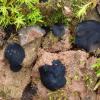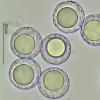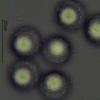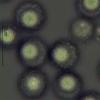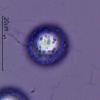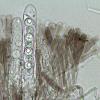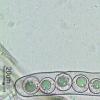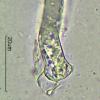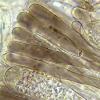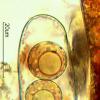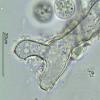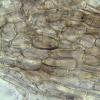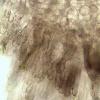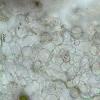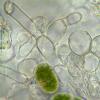
15-12-2025 07:09
 Danny Newman
Danny Newman
indet. Rutstroemiaceae sp. on unk. fallen leavesMc

15-12-2025 21:11
 Hardware Tony
Hardware Tony
Small clavate hairs, negative croziers and IKI bb

15-12-2025 15:54
 Johan Boonefaes
Johan Boonefaes
Unknown anamorph found on the ground in coastal sa

15-12-2025 15:48
 Danny Newman
Danny Newman
Melanospora cf. lagenaria on old, rotting, fallen

15-12-2025 07:05
 Danny Newman
Danny Newman
Pseudosclerococcum golindoi (det: Zotto)near Cosb

15-12-2025 11:49
 Danny Newman
Danny Newman
ITS sequences from the following two collections B

15-12-2025 12:34
 Danny Newman
Danny Newman
indet. Rhytismataceae on oak leafnear Purchase Roa

09-12-2025 12:06
 Andgelo Mombert
Andgelo Mombert
Bonjour,Je recherche l'article concernant Hypobryo

Hola a todos.
Subo unas imágenes de un disco negruzco que hemos encontrado hoy sobre tierra húmeda, en un bosquete de P. halepensis y carrascas,
Tiene esporas esféricas de 14,5-17,5 micras, con verrugas redondeadas muy pequeñas y aisladas.
No vistos croziers, IKI(-).
¿Qué os parece que puede ser?
Gracias por su ayuda.
Rubén
may be Scabropeziza/ Plicaria spec.
Peter.

I don't know but only for information, see description of Greletia (Smardaea) mülleri, an american species.
Beñat

Gracias Peter, Beñat.
He mirado Greletia mülleri y la ornamentación esporal es parecida y podría encajar, pero la medida esporal es algo menor.
Seguiré buscando.
Un saludo
Rubén
Hope you find the correct name for it.
Sincerely,
zaca
Plácido

M. pseudoanthrancina is a Peziza, see fungi non delineati by René.
And spores of it are around 7-8 µm, not 14-17 like here. A big difference, no ?
Agur bero bat,
Beñat

For a project dedicated to some Marcelleina species, we had the opportunity to sequence Rubén's collection. A paratype of Marcelleina donadinii was also revised and sequenced, and appears to be the same as Rubén's fungus!
Except the spore size, slightly smaller, Ø (12.5) 13-15 µm, in the paratype, the other features agree with Moravec's description (1987). Note that Moravec's drawing of ascospores doesn't correctly render the small warts on the surface (its SEM photos are more informative).
Finally, this species seems to be a member of Discinaceae...

Gracias por la información.
Un abrazo
Rubén
